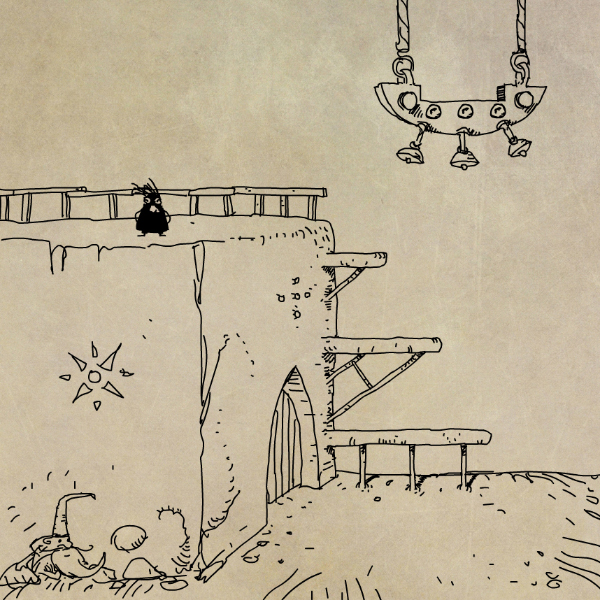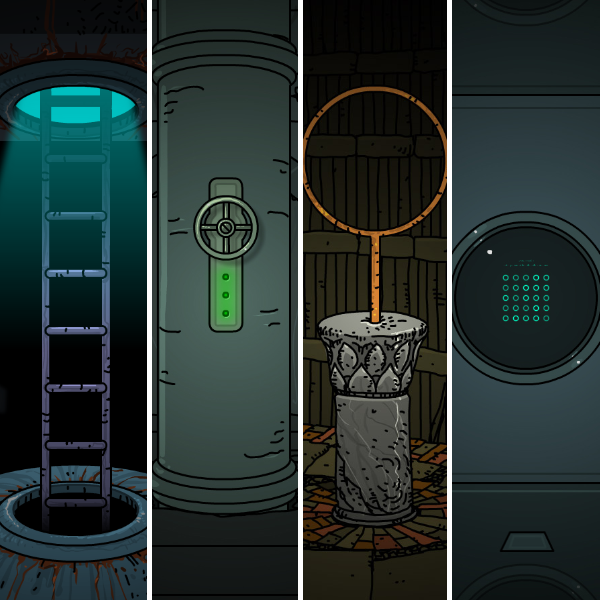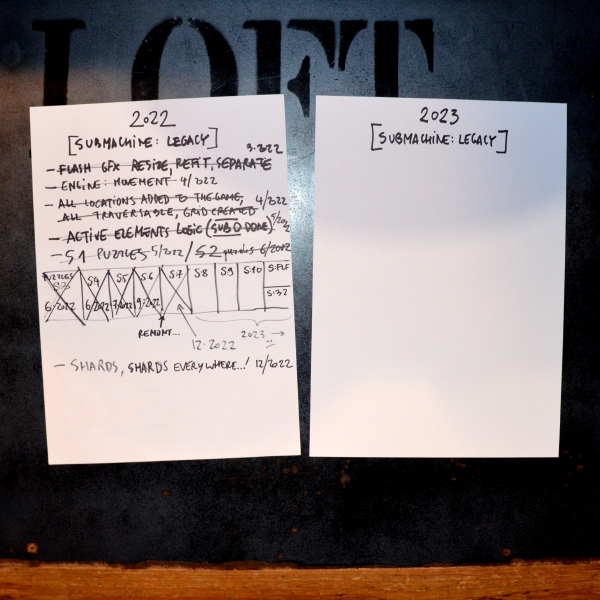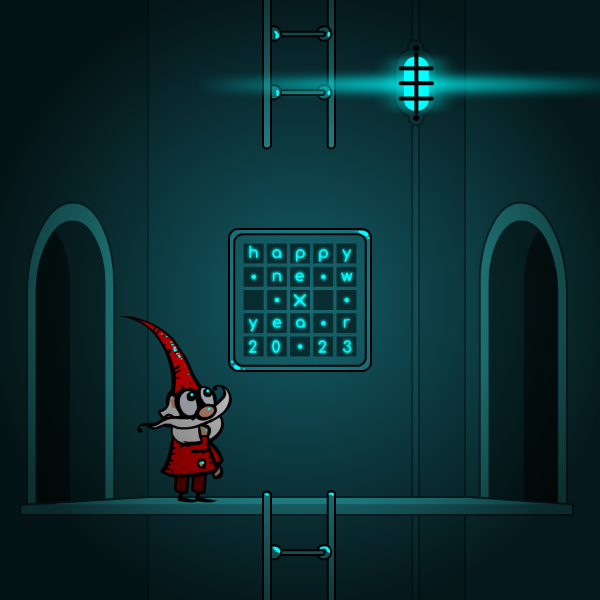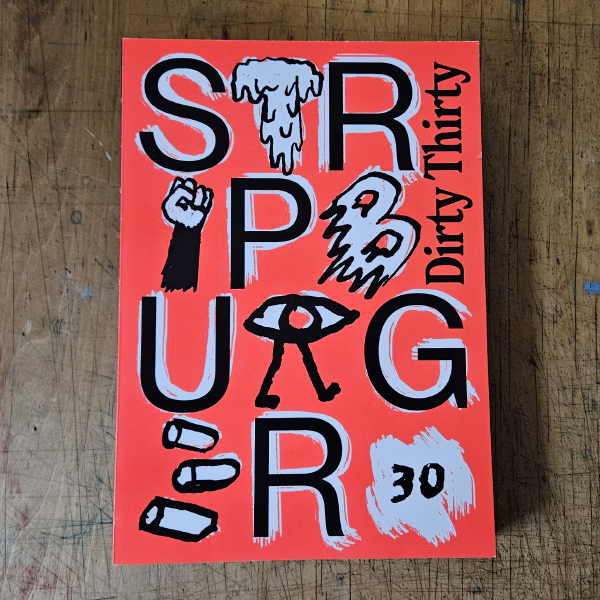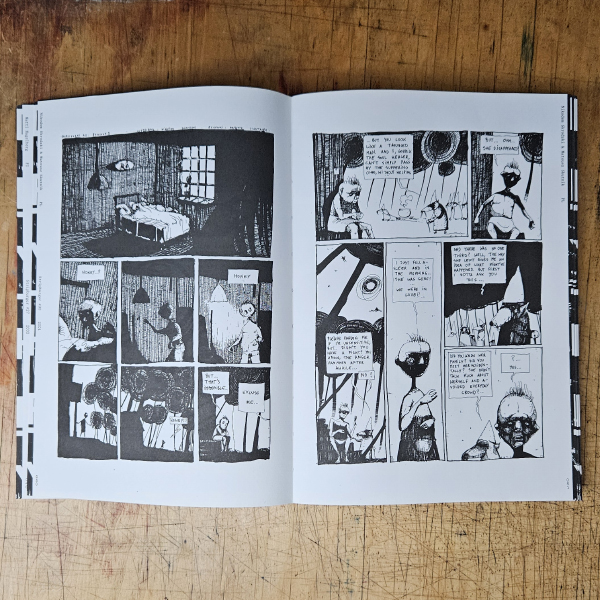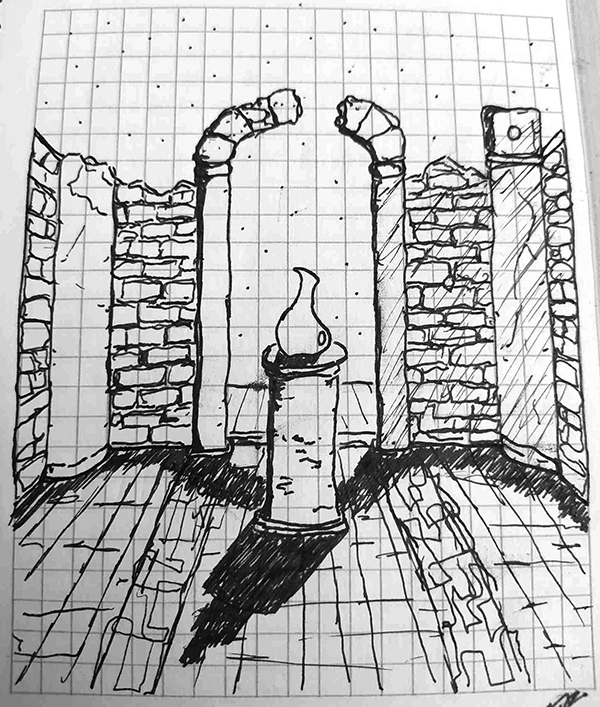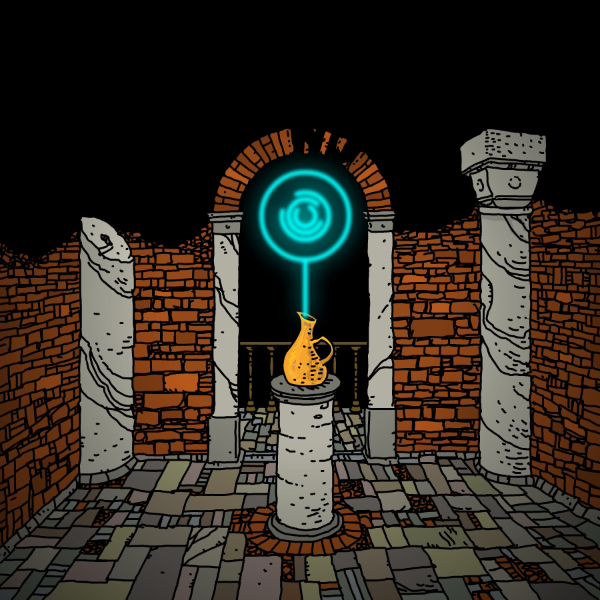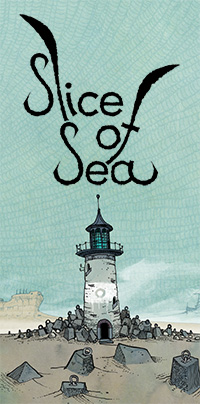Daymare Stray
March 8, 2023
Hear me out.
For the sake of my mental health, today I decided to take a one-day break from remastering Submachine into Legacy (I’m still finishing chapter 8) and see how things were back in the good old days of flash development over a decade ago. Not sure why I started tinkering with “Where is 2010?”, but here we are with a brand new version – renamed into more lore-friendly title of Daymare Stray. I think I was just curious to see how the code looked like in those old days. Not code per se, but my thought process concerning constructing game logic. It was… strange. Like reading your old diary pages, stepping into your old self. Then I changed main character animations to look a bit better, then switched to 60 fps, which prompted me to update all animations, and and then also sound design needed a bit of love. The screenshot you see above shows a small graphical change in which I emphasized the fact that you can climb back left up that wall, as in old version it was not so obvious. Is this a one-day remaster? Nah, that will come when I remaster entire series into one big game, just like Submachine Legacy. But I have to admit – it was fun to get back to flash for one day. It’s also super convenient to be able to draw and code in one application. This really highlights the genius of flash workflow. The freedom to create in an instant. Don’t get me wrong, working in Game Maker and Photoshop and Spine and Flash all at once is also super fine, but flash was on a completely different level. It made a game designer out of me after all. Ah, to be young again…
Enjoy this little trip down the memory lane!
[2024 update: Changed game background to match the upcoming remaster of entire series].








